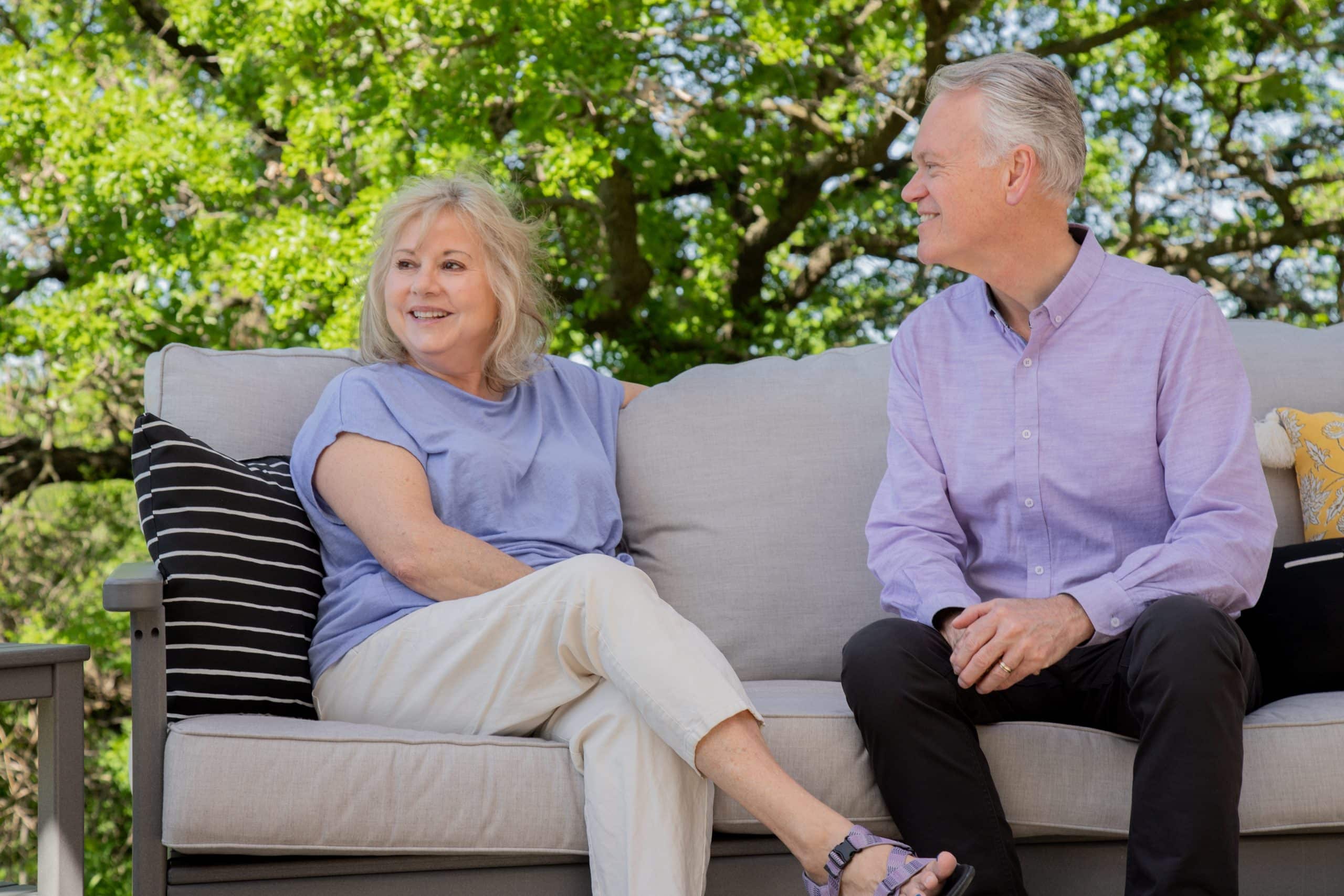Outdoor Spaces That Improve Wayfinding for Memory Care
Outdoor Spaces That Improve Wayfinding for Memory Care


For people living with Alzheimer’s or dementia, finding their way—even in familiar surroundings—can be a daily struggle. In memory care communities, poor wayfinding design often leads to confusion, anxiety, and isolation. But with the right outdoor layout and furniture choices, care teams can significantly reduce these challenges and create spaces that feel safer, clearer, and more inviting.
This article explores how outdoor furniture supports wayfinding in memory care, using evidence-based design strategies that benefit both residents and staff.
What Is Wayfinding in Memory Care?
Wayfinding refers to the ability to orient yourself, make route decisions, monitor progress, and recognize your destination. It’s something we all do intuitively—until cognitive decline interrupts the process. According to research published in Creating a Supportive Environment Using Cues for Wayfinding in Dementia by Dr. Rebecca Davis and Dr. Catherine Weisbeck, visual cues and intentional design play a powerful role in improving navigation and confidence for people with memory loss.
Why Wayfinding Design Matters in Senior Living
Many senior and memory care facilities are built with standard architectural practices—long, repetitive hallways, identical doorways, and uniform decor. While efficient, this layout does little to support residents with cognitive impairments. In fact, over 50% of individuals with early Alzheimer’s experience navigation difficulties, which can lead to disorientation, fear, and reduced social interaction.
Thoughtfully designed outdoor spaces with distinct furniture and clear visual cues help residents move more confidently and independently.
The Four Stages of Wayfinding
To design truly supportive spaces, it’s helpful to understand the four key stages of wayfinding:
- Orientation – Recognizing your current location relative to other places
- Route Decision – Choosing a path to your destination
- Route Monitoring – Confirming you're on the correct path
- Destination Recognition – Knowing when you’ve arrived
Each stage can be supported through color-coded furniture, clearly defined areas, and standout visual landmarks, especially outdoors, where space is more flexible and adaptable.
How Outdoor Furniture Enhances Wayfinding for Dementia
Outdoor areas offer a perfect opportunity to reinforce wayfinding through color, purpose, and layout. Instead of building three identical patios, for example, design each space with a unique function, name, and furniture color to improve memory recall and orientation.
Example: Three Color-Coded Outdoor Spaces
1. The Brown Lounge (Relaxation Zone)
- Purpose: Quiet retreat for rest and relaxation
- Furniture: By the Yard cushion chairs, gliders, benches, upright Adirondack chairs
- Avoid: Traditional Adirondack chairs (too low) and rockers/swings (may cause balance issues)
- Suggested pieces: Prairie End Table, Cambridge Coffee Table
- Available in warm brown tones for easy visual recognition
2. The Green Garden Space (Engagement Zone)
- Purpose: Gardening and nature-based activities
- Furniture & Accessories: Elevated planter boxes, potting bench, garden arbor, storage boxes
- Benefits: Sensory stimulation and purposeful activity
- All items available in green to support color-based wayfinding
3. The Redwood Activity Patio (Social Zone)
- Purpose: Group interaction, games, and events
- Furniture: Tête-à-têtes, cafe tables, dining tables, dining-height chairs
- Use different table sizes for large and small gatherings
- Redwood finish supports visual distinction from other zones
Each of these spaces gives residents a strong cue for orientation and destination recognition. Instead of a generic instruction like “go to the patio,” staff can say:
“Let’s head past the brown lounge and over to the green garden space.”
This simple change provides layered, meaningful guidance.
Best Practices for Dementia-Friendly Outdoor Furniture Design
To improve wayfinding through furniture selection:
- Choose distinct colors for each area (e.g., brown, green, redwood)
- Give each space a specific name and function
- Add salient features (planters, benches, garden tools, or decor)
- Ensure all furniture is senior-safe (upright seating, minimal motion, easy entry/exit)
Tip: Avoid using similar colors like black and dark brown together, especially for seniors with vision impairments. Choose tones that stand apart clearly.
Why Memory Care Communities Trust By the Yard
By the Yard’s commercial-grade outdoor furniture is built for high performance, low maintenance, and year-round durability—ideal for memory care environments. Our pieces support long-term value, safety, and style, with 15+ color options to support visual contrast and wayfinding design goals.
Designed for Senior Living:
- Non-porous, fade-resistant HDPE material
- Easy to clean and sanitize
- No splinters, cracking, or rotting
- Senior-friendly ergonomic design
- Available in upright seating heights and color-coded finishes
We serve:
- Memory care and senior living communities
- Residential care homes
- Hospitals and rehab centers
- Universities, hotels, golf clubs, and more
Bring Better Wayfinding to Life
Creating safe, comforting, and navigable outdoor spaces doesn’t require a complete redesign—just smart, intentional decisions. With By the Yard, you can invest in purposeful, senior-safe furniture that supports independence and peace of mind for memory care residents.
Ready to create wayfinding-friendly outdoor spaces?
Explore our commercial outdoor furniture or call our commercial sales team at (952) 219-7070 for personalized support.
